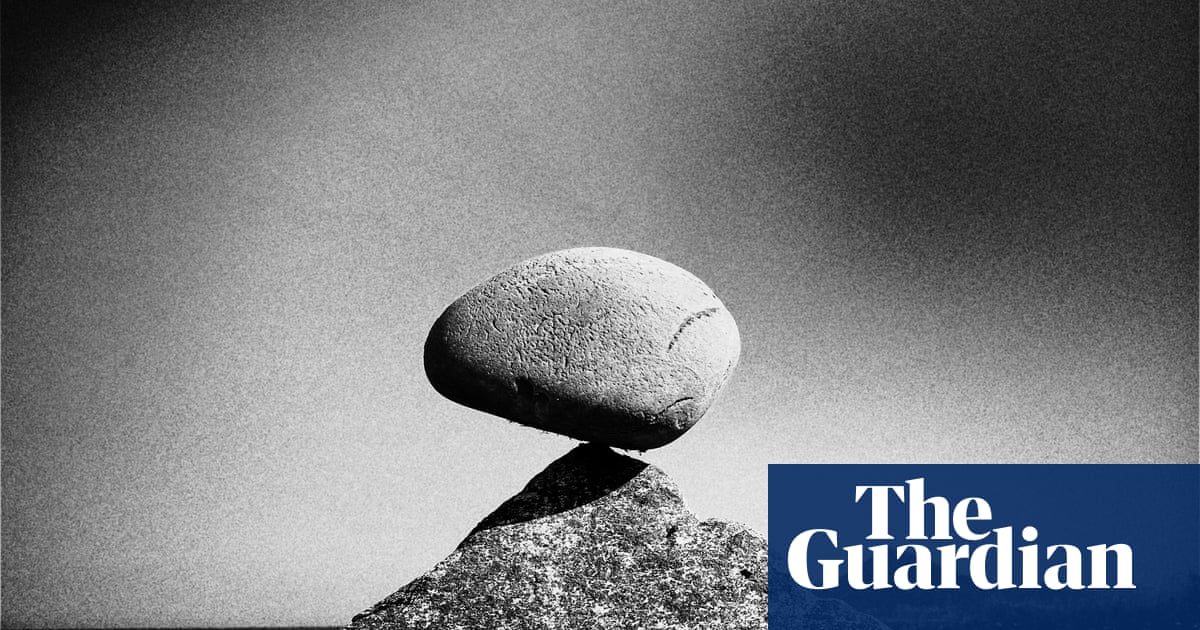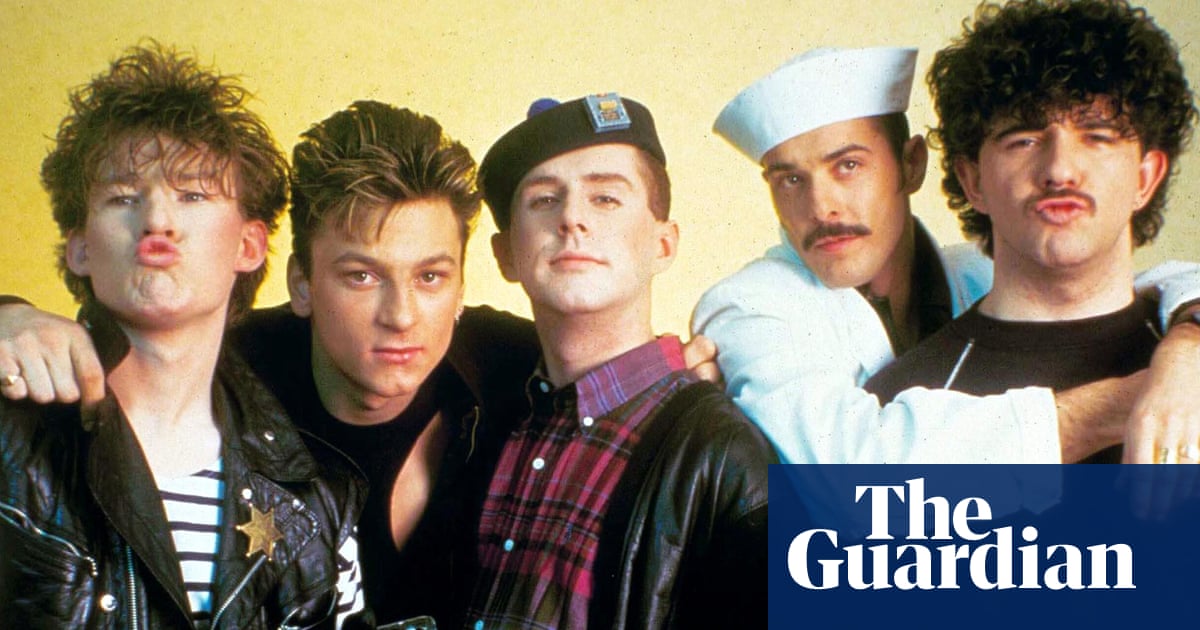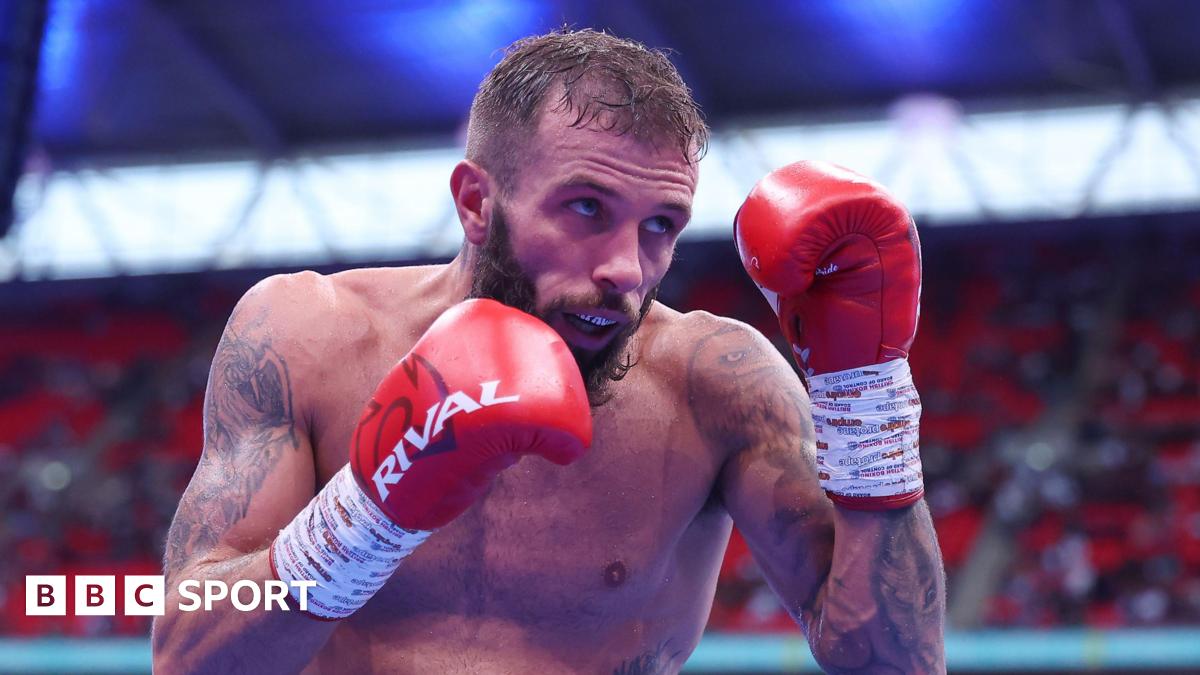By the time the young man in red swim shorts sprinted up the beach to Chiara MacGillivray and Jon Sechuk, the two twentysomethings had yet to convince a single Jersey shore partier to join their crusade for chastity.
In fairness, convincing young people to remain “chaste” until marriage is a hard sell at the best of times. And the members of Generation Life knew that Saturday in June at the Jersey shore – a stretch of sand south of Atlantic City so renowned for horniness, drunkenness and reality TV show antics that its very name has become a synonym for hedonism – was not exactly a good time for chastity. It may have even been the worst possible time.
Yet for the 10 activists who accompanied MacGillivray and Sechuk to the beach, the sheer WTF-ness of their pseudo-mission trip was kind of the point. “We wouldn’t be impacting as many people if we just preached to the choir,” Tino DiMurro, 21, told me.
After fortifying themselves with a morning mass service, they split into small groups and fanned out across the beach, which was sparsely populated after an hour of light rain. Beachgoers tended to be unmoved by MacGillivray and Sechuk’s opening line: “What do you think love is?”
“I don’t know if I’m smart enough to answer that,” one young man said. “Is it like for a video or something?”
“Is this a bit?” another asked Sechuk, a bearded 27-year-old who wore a pale pink shirt that read “my brother’s keeper”. “Or are you with the church?”
MacGillivray and Sechuk had already made one circuit of their swath of the beach when the young man in red trunks bounded up to them, clutching a Gatorade bottle. He had heard that they were asking around about people’s views on relationships.
“I actually just got out of a relationship and I’m here on the beach to fix that,” he told MacGillivray and Sechuk, who laughed politely. “I had my prom like two nights ago – whatever, that’s beside the point. I just got out of my relationship. I really liked her.
“She’s kind of, like, doing her own shit,” he continued. “I’m kind of new to the whole dating thing. It was, like, a new whole thing. It was a lot, it was, it was very overwhelming.”
The young man swayed and stretched as he held the bottle. I was starting to suspect that the clear liquid sloshing inside was not full of electrolytes.
MacGillivray, a 23-year-old brunette and recent graduate of the Catholic Franciscan University of Steubenville in Ohio, took a risk. “This is a shot in the dark, but, like, have you ever heard of the word chastity?” she asked.
“That means not having sex, right?” the young man responded.
“Not really,” MacGillivray said. “It can look like that in certain aspects of your life. But for the most part, what the word actually means is seeing another person for who they are, with their body, their mind, their personality …”
“Yeah, like, have you guys seen Robin Hood: Men in Tights?” he interrupted.
“I don’t think so,” MacGillivray said.
“That movie’s fire! Watch that tonight. Whatever hotel you’re staying at, put on Robin Hood: Men in Tights. Cary Elwes is in it. The girl’s got a metal chastity belt around her” – he gestured at his midsection – “genitalia”.
“OK,” MacGillivray said, with another laugh. “That’s not what it’s about.”
Their conversation soon petered out. The young man seemed unlikely to embrace chastity anytime soon (or to remember the conversation), but MacGillivray and Sechuk were undeterred.

Over the last two decades, the Pennsylvania-based Generation Life has repeatedly taken college-aged students to do a weekend of “beach outreach” on the Jersey shore. Those decades have also witnessed something of a second sexual revolution in young people’s sex lives. The rise of the internet has upended how people interact. Porn of every possible proclivity has become ubiquitous online, while kink and non-monogamy have gone mainstream. #MeToo triggered a global reckoning around sexual violence, which in turn unleashed a ferocious conservative backlash. More young people than ever – around a fourth – identify as LGBTQ+, and they are increasingly secular.
For advocates of sexual abstinence until marriage, who are frequently fueled by their Christian faith, all this tumult presents a critical challenge: how do they stay current with a message that urges people to resist the allure of change? What is 21st-century “chastity” supposed to be about?
Gen Z are ‘comparing and despairing’
Gen Z is, rather notoriously, in the middle of a “sex recession”. Only about a third of gen Z high school students have had sex, according to the Centers for Disease Control and Prevention, while a study conducted in part by the Kinsey Institute found a whopping one in four adult members of gen Z have also not had sex. Even if a gen Zer has gotten laid, they are increasingly likely to go longer between partners.
There is no scientific consensus on why gen Z has stopped having as much sex, but it is not the result of abstinence pledges. (Although the federal government has poured more than $2bn into funding abstinence-only sex education since 2000, research has repeatedly found that it produces lackluster results.) Instead, two twinned culprits are often singled out: smartphones and the social media platforms that they immerse us in. Social media encourages people to not only constantly compare themselves with peers and celebrities – a process often dubbed “comparing and despairing” – but also causes them to treat their own bodies as objects to be judged based on sex appeal. Some research has found that this can, in turn, lead girls and women to submit to sex they do not want; alternatively, it may lead people to avoid sex altogether, because it seems like another chance to be found wanting.
These findings’ seemingly contradictory nature underscores a critical point: the science on social media’s effects is as muddied as the science on the sex recession. Yet vast swathes of young people do feel that social media has ravaged their lives, particularly their mental health. This belief is an example of what sociologist Arlie Russell Hochschild calls “the deep story”, or “a story that feels as if it were true”. The deep story and its texture of truth can be just as powerful, if not more, than the facts. And it was this deep story about social media that Generation Life, in order to update their message for the modern age, sought to evoke on the beach and the boardwalk.
As the sun set, the activists split up to tackle the Wildwood boardwalk, which had grown more populated as the rain receded. DiMurro and Eileen Sceski, also 21, stopped one young man and asked his opinion on how social media impacts relationships. “Definitely distorts it,” he said.
“Transactional, would you say?” Sceski asked.
“Definitely transactional,” he agreed.
Another young man, with a silver cross around his neck and a hovering girlfriend, told the pair that social media was nothing less than “poison”. “I have it,” he confessed, “but I try not to use it so much.” The problem, everybody thought, was comparing and despairing. Social media made everybody look too good: their relationships too perfect, their bodies too sleek, their happiness too unshakeable.
“Everybody hates social media, and the fact that it kind of, like – that’s all you see is, the surface level,” said Sceski, who wore her brown hair in thin braids beneath a backwards baseball cap. Her Generation Life T-shirt read: “You’re worth waiting for.”
She continued: “You don’t get to actually meet and talk with the person. You only see the body.”
None of the conversations that I witnessed on the boardwalk progressed to the point where the Generation Life activists introduced the concept of “chastity”. They seemed to prefer bonding over universal problems, such as the hunt for true love and self-esteem, rather than proposing their specific and potentially off-putting solution of avoiding premarital sex. It was like a sales pitch that sputtered out halfway; I could not tell whether people even realized that they were talking to chastity advocates.
This omission felt less like a lie than the result of social anxiety and an abundance of hopefulness. By simply introducing the idea that the young people at Wildwood deserve better, the activists prayed – literally – that they would on their own come to reconsider their “dignity”. I was not so convinced, especially as dusk fell and the contrast between the Generation Life activists’ message and the world that most people move in grew starker.

One side of the boardwalk was open to the ocean and several amusement park rides, including a towering ferris wheel. The other side was lined with shops and signs advertising body piercings, “paintball: live targets”, edibles, shorts whose butts read: “IT AIN’T GONNA SPANK ITSELF” and shirts that declared: “I ♥ MILFS”. (Other shirts expressed ♥ for “DILFS”, “SLUTS”, “BLACK GUYS” and “MY HOT WIFE”.) The stores blasted Abba and reggaeton, while boardwalk speakers played the voice of a jolly man repeating the same message over and over again: “You’re gonna have a blast on the boards! Morning, noon and night!”
While the Generation Life activists dressed rather plainly, in T-shirts and jean shorts and athleisure, many of the women on the boardwalk wore bikinis or backless tops paired with tiny bottoms. The men dressed in board shorts and tight tops of their own. Even if the Jerseyshore partiers planned to go to church on Sunday – and the number of crosses around people’s necks suggested some degree of devoutness – they clearly did not mind sinning on Saturday. The boardwalk chapel was practically deserted.
In comparison, every Generation Life activist was attending or had graduated from a Catholic university. At lunch, I ate a few fries before awkwardly realizing the others were waiting to say grace. And after each conversation with someone new, the Generation Life activists noted their name in order to pray for them. When one activist was not sure whether the name was “Henry” or “Henrik”, another said it didn’t matter: “The Word will know who you’re talking about.”
To be clear, the Jersey shore is not exactly a hotbed of secular leftism. Donald Trump won the New Jersey coastline by astonishing margins in 2024 and once packed the Wildwood boardwalk and beach with almost 100,000 rallygoers. Yet even in Maga country, I only caught a handful of interactions where the activists managed to reach the heart of their sales pitch. On the beach, after Sechuk and MacGillivray revealed that they were advocating for chastity, one young man lounging in a beach chair – the same man who had asked if they doing a “bit” – took it in stride. “Cool, that’s really cool,” he said.
He did not, however, seem interested in becoming chaste. “You’re gonna have sex in college,” he said. “Don’t you think it’s important to teach about safe sex?”
If Sechuk and MacGillivray had an answer, I did not hear it. Instead, the conversation wheeled away from sex and chastity, to our favorite movies.
The pitfalls of avoiding pain
“Abstinence” implies a lack of something; “virginity”, a fleeting status. Many abstinence-only sex-ed advocates today avoid both terms, claiming that they support “sexual risk avoidance”.
Generation Life prefers “chastity”, which is, in their view, about cultivating deeper intimacy with yourself and those you love. Even if you have already had premarital sex, Generation Life dictates that you can strive for chastity by avoiding it in the future. Moreover, having the right kind of sex – that is, married sex – counts as chaste, because the bonds of matrimony make it virtuous.
Nobody so much as breathed the word “abortion” while we were on the Jersey shore, but in case the group’s name didn’t give it away, that’s part of Generation Life’s mission, too. Its website reads: “We believe that by spreading the message of chastity, we can end abortion at its root cause.”
“You shouldn’t just be using your body as a tool, or other people’s bodies as a tool, for your own pleasure,” said DiMurro, who is planning to save sex for marriage. “We don’t believe that sex is bad or evil or anything like that at all. In fact, we think it’s so good that it should only be saved for committed relationships.”
Although such a broad definition of chastity might surprise modern ears – or fans of Robin Hood: Men in Tights – it’s far from new. Centuries of thinkers have used “chaste” to describe a whole suite of behaviors, not just sexual ones. The 13th-century theologian Thomas Aquinas, for example, saw avoiding sex as one facet of “spiritual chastity”, or “the refusal to enjoy things that were judged to be against God’s design”, scholar Hanne Blank wrote in her 2007 book Virgin: the Untouched History. Meanwhile, ancient Greek philosophers, equated chastity with moderation, such as maintaining a solid diet and work ethic, and with contributing to the greater good.
It is also a common misconception that people who champion abstinence initiatives are anti-sex. In reality, religious conservatives have for decades embraced thinking like DiMurro’s, with white evangelicals hawking millions of sex manuals to married couples. (Their advice could be frisky: one famous evangelical sex guru of the 1970s, Marabel Morgan, said it was a “great idea” for a wife to greet her husband wearing nothing but Saran wrap.)
Generation Life’s argument, then, transforms the prudish idea of waiting for sex into a self-righteous quest to set a higher standard across all areas of life. Chastity, in the group’s telling, reclaims autonomy in the face of overwhelming pressure, particularly on social media, to perform sexuality. Given that gen Z is famously risk averse, to the point that they are drinking less and even getting fewer drivers’ licenses than past generations, this argument may be especially potent: caution is no longer something to be sneered at but celebrated.

To be sure, Generation Life still faces steep odds. Their activists are growing up in an age when, despite the sex recession, a record 77% of 18- to 34-year-old Americans believe that sex before marriage is “not wrong at all” – and when the average age of marriage is, at nearly 30, higher than ever. Generation Life can’t even rely on God to get their message across, since only 30% of Americans between the ages of 18 and 39 identify as white Christians – less than in every other age group. (Because white Christians and Christians of color have distinct histories and traditions in the US, including in their approaches to sex, experts tend to evaluate the groups separately.)
That’s why, in addition to chastity, Generation Life uses another word to define their mission: “countercultural”. The contrast between the activists and everybody else on the Jersey shore is, again, kind of the point: even if Generation Life can’t draw more people into its mission, it can create a bunker mentality among those who do believe in it. The depth of the problems faced by their cohort reinforces their conviction that they alone are on the right path.
“It shows a bit of the brokenness – that they’re willing to just talk to strangers about their sex life, you know what I mean?” Sceski said of people at the shore. “Normal people don’t do that.”
I found the Generation Life activists to be fearfully fixated on the idea that the world is full of pain, much of it self-induced – even more so than your average member of gen Z. If chastity encompasses a whole range of virtuous behaviors outside of sex, then a greater number of nonsexual behaviors become suspect. Like, for example, being emotionally open with people who do not deserve it, including in platonic settings.
“We don’t have the insight to never make mistakes in a relationship,” MacGillivray said. But, she continued: “There are things that are bonding. Obviously, sex is bonding. Sharing really deep stuff is bonding. You feel something. So just making sure the people that you’re doing it with – you’re doing it intentionally and not just because it came up in conversation.”
They were even advised to be cautious about opening up to the people they met at the shore. “You’re putting yourself in a vulnerable position,” MacGillivray said. “And obviously, that’s kind of like chastity in general. You want to put yourself in safe situations.”
On my drive home, I kept turning over my conversations with DiMurro. He would like to be in a relationship but only wants to date someone if he could see himself marrying her. Not many other 21-year-olds want to date so seriously, so DiMurro is not dating at all.
“A lot of people, who maybe don’t think the same way, get in relationships when they shouldn’t or at the wrong time or with the wrong person [and] end up getting hurt unnecessarily,” DiMurro told me. “Either you’re dating for marriage or you’re dating for heartbreak.”
When I was 21, I deliberately dated for heartbreak, throwing myself into a relationship that had zero chance of ending in marriage because I thought the rush would be worth the ruin. We did not have much sex, which I mention only because I know firsthand that while relationships do not need sex to deepen, avoiding sex is no protection against pain.
After that relationship ended, and after every other heartbreak, I learned about the depth of my own capacity to feel. (Who knew I could cry for 11 hours straight?) I learned about empathy, because I realized other people had also experienced this kind of chasmic pain. I learned about resilience, because I kept going through the heartbreak and eventually recovered from it. And I learned about art, because I suddenly understood what all those songs were about.
I can see the appeal of chastity. Frankly, I was charmed by the Generation Life activists’ earnest desire to understand love and to make people feel cherished. But I do worry that avoiding sex is a proxy attempt to avoid connection and vulnerability. The consequences of this evasion are personal and political. As the poet Audre Lorde wrote in her seminal 1978 essay Uses of the Erotic: “The sharing of joy, whether physical, emotional, psychic or intellectual, forms a bridge between the sharers which can be the basis for understanding much of what is not shared between them, and lessens the threat of their difference.”
During lunch, the Generation Life activists asked me what I thought love was. I told them it was about trying to no longer keep score. I should have clarified what I meant: it is about learning to live with risk, context and the discovery that the world – and the people you love, and your own psyche – will break your heart again and again. Living without heartbreak, however, is no life at all.

 4 months ago
58
4 months ago
58








 English (US) ·
English (US) ·